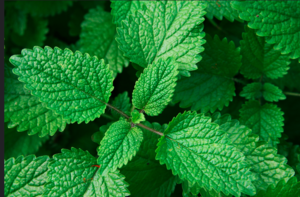
Lemon balm is a herbaceous perennial in the mint family. The leaves are edible and have a mild lemon aroma and flavour. It is mainly used as a culinary herb. It is easy to grow and quite prolific, yielding leaves from spring to autumn.
Taxonomy
Family: Lamiaceae / Labiatae (the "mint family" or "deadnettle family")
Genus: Melissa
Species: Melissa officinalis
There are 2 accepted infraspecies.[1]
- Melissa officinalis subsp. inodora (native range is Eastern Mediterranean to North Iraq).[2]
- Melissa officinalis subsp. officinalis
Common Names
Range
Native to:
Albania, Algeria, Baleares, Bulgaria, Corse, Cyprus, East Aegean Is., France, Greece, Iran, Iraq, Italy, Kirgizstan, Kriti, Lebanon-Syria, Morocco, North Caucasus, Portugal, Sardegna, Sicilia, Spain, Tadzhikistan, Transcaucasus, Tunisia, Turkey, Turkey-in-Europe, Turkmenistan, Uzbekistan, Yugoslavia
Introduced into:
Alabama, Argentina Northeast, Argentina Northwest, Argentina South, Arkansas, Austria, Azores, Belgium, British Columbia, California, Canary Is., Chile Central, Connecticut, Czechoslovakia, Delaware, Denmark, District of Columbia, Georgia, Germany, Great Britain, Hungary, Idaho, Illinois, Indiana, Ireland, Juan Fernández Is., Kansas, Kentucky, Krym, Louisiana, Madeira, Maine, Manitoba, Maryland, Masachusettes, Michigan, Missouri, Montana, Netherlands, New Jersey, New York, New Zealand North, New Zealand South, North Carolina, Ohio, Oklahoma, Ontario, Oregon, Pennsylvania, Poland, Québec, Rhode I., Romania, South Carolina, South European Russi, Sweden, Switzerland, Tennessee, Ukraine, Uruguay, Vermont, Virginia, Washington, West Siberia, West Virginia.
[Source = Plants of the World Online, Kew Science].[1]
Description
Lemon balm has bright foliage with slight indentation around the edges. It has small white flowers when flowering. There are also golden-leaved and variegated varieties available.
Lemon balm has a lemon-scented fragrance. The odor has also been described as "soapy".
It grows to a height of around 2 feet or 60cm.
Growing lemon balm
Choose from seed, cuttings, seedlings or division. It grows well from any of these choices.
It is recommended that you grow it in containers unless you have ample garden space for it to spread across. A container will stop it from spreading and makes it easy for you to move around.
Use standard potting mix. Lemon balm thrives on animal manure, so add some well rotted manure or sheep manure pellets.
Caring for lemon balm
Cut back woody areas of the plant. This will encourage new leaves to grow. A light trimming is required regularly, to help keep the plant compact.
Harvest the leaves from spring to fall.
Problems
Lemon balm is a vigorous grower, which is to say, some of your neighbors might not be too happy with you for planting it as it can be invasive. But if you have good tilth, it is not that hard to get it out, and you will at least feel rather clean after wrestling with it.
Uses for lemon balm
Culinary
Lemon balm leaves are mainly used a culinary herb. It can be made into a herbal tea, which is pleasant tasting.
However, larger, bulk quantities can be chopped and used in salads giving a mild lemon flavour and aroma.[4] In this respect, some consider lemon balm a perennial vegetable.[4] Lemon balm leaves (young ones) can also be added to fish dishes. It can also give a lemon flavor to meat stuffing. Much of the flavour is lost if the leaves are cooked or dried.[4]
Medical
There is some research[verification needed] showing it to be a calming aromatic for some people; in particular, it has been shown to calm agitated Alzheimer's patients.[verification needed] It does not work for everyone, but it works for some.
References
Template:Reflist Template:Attrib permawiki
- ↑ 1.0 1.1 Melissa officinalis L. (Plants Of The World Online).
- ↑ Melissa officinalis subsp. inodora Bornm. (Plants Of The World Online).
- ↑ 3.0 3.1 3.2 3.3 Melissa officinalis (Plants For A Future).
- ↑ 4.0 4.1 4.2 Crawford, M (2012). How to grow perennial vegetables. Green Books. ISBN 9781900322843.